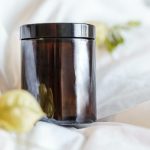You shouldn’t cover Roundup with lawn fabric because it needs direct contact with leaves to work effectively. The fabric blocks sunlight and can trap moisture, reducing absorption and causing the herbicide to pool or run off. This weakens its ability to kill weeds and might damage your lawn. It’s best to apply Roundup first, let it dry fully, then lay down fabric. If you want to keep weeds at bay, you’ll want to explore proper application and alternatives that protect lawn health.
Table of Contents
Key Takeaways
- Covering Roundup with lawn fabric reduces herbicide effectiveness by blocking direct leaf contact needed for absorption.
- Roundup should be applied and fully dried before laying lawn fabric to maintain weed control efficacy.
- Lawn fabric can cause Roundup to pool or run off, risking harm to nearby plants.
- Applying fabric too soon after Roundup may trap moisture and slow herbicide action.
- Best practice is to apply Roundup during active weed growth, then cover with fabric after drying to avoid wasted effort.
How Roundup Herbicide Works
Although Roundup is widely used for weed control, you mightn’t know exactly how it works.
Roundup’s active ingredient, glyphosate, targets an essential enzyme plants need to grow. When you apply Roundup, the glyphosate is absorbed through the leaves and transported throughout the plant. This stops the plant from producing certain amino acids, which are vital for its survival.
Without these amino acids, the plant can’t grow, and eventually, it dies. You’ll notice the weeds yellowing and wilting within days. Since glyphosate moves systemically, it kills the entire plant, including roots.
However, Roundup won’t harm grasses or other plants that don’t rely on the targeted enzyme. Understanding this helps you see why Roundup is so effective and why timing and application technique matter.
Purpose and Benefits of Lawn Fabric
Using lawn fabric can greatly improve your weed control efforts and overall lawn health. When you lay it down, the fabric blocks sunlight, preventing weed seeds from germinating and growing. This means fewer weeds compete with your grass for nutrients, water, and space.
The fabric also allows air, water, and nutrients to pass through, so your lawn stays healthy while weeds stay suppressed. Additionally, it helps reduce soil erosion and moisture loss by protecting the soil surface.
Interaction Between Roundup and Lawn Fabric
When you apply Roundup over lawn fabric, you need to contemplate how the fabric affects its effectiveness.
Lawn fabric acts as a barrier, so if Roundup doesn’t reach the weeds directly, its herbicidal action diminishes. Roundup works by being absorbed through the leaves, and if the fabric blocks the spray, the chemical won’t contact the plants.
Some fabrics allow liquids to pass, but many are designed to repel water, which means Roundup may simply pool on top or run off.
Many lawn fabrics repel water, causing Roundup to pool or run off rather than penetrate through.
Applying Roundup before laying fabric guarantees better absorption by weeds. If you spray after fabric installation, you might find the herbicide less effective, especially if the fabric blocks or redirects the spray, preventing direct weed contact.
Always consider the interaction to avoid wasted effort.
Best Practices for Applying Roundup
You’ll want to choose the right time to apply Roundup, ideally when weeds are actively growing and the weather is calm.
Before spraying, make certain to prepare the area by clearing debris and protecting nearby plants.
After application, follow proper care steps to guarantee the herbicide works effectively and your lawn fabric stays in place.
Timing for Application
Early morning or late afternoon provides the best conditions for applying Roundup, as temperatures are cooler and winds are calmer. This helps the herbicide stick to weeds and reduces the chance of drift onto desirable plants.
Avoid spraying during midday heat or windy conditions, since the product may evaporate quickly or spread unintentionally. Also, make certain there’s no rain forecast for at least 24 hours after application, giving Roundup time to work effectively.
Applying Roundup when plants are actively growing, typically in spring or early summer, improves results. If you’re covering treated areas with lawn fabric, wait until the Roundup has fully dried to prevent disturbing the chemical’s absorption.
Timing your application right guarantees you get the most effective weed control with minimal risk.
Preparation Before Spraying
Before spraying Roundup, verify you properly prepare both the area and your equipment to maximize effectiveness and safety.
Start by clearing debris, rocks, or pet waste from the target zone to guarantee the herbicide reaches weeds directly. Check the weather forecast; avoid windy or rainy days to prevent drift and dilution.
Next, inspect your sprayer for leaks and clean any residue from previous use. Calibrate your sprayer to deliver the proper amount of Roundup per square foot.
Wear protective gear like gloves, goggles, and long sleeves to shield yourself from exposure.
Finally, keep pets and children away from the area during application. Taking these steps guarantees the herbicide works efficiently while minimizing risks to you and your environment.
Post-Application Care
After applying Roundup, monitor the treated area closely to confirm ideal results.
Avoid disturbing the soil or plants while the herbicide works, usually for at least 24 to 48 hours. Don’t water the area immediately after application, as rain or irrigation can wash away the product, reducing its effectiveness.
Once the weeds have died, you can carefully cover the area with lawn fabric to prevent new growth. Make sure the fabric is secured well to avoid gaps where weeds might sprout.
Keep an eye on the spot for any regrowth, and reapply Roundup if necessary, following label instructions.
Proper post-application care confirms your efforts aren’t wasted and helps maintain a healthy, weed-free lawn.
Potential Risks of Covering Roundup With Lawn Fabric
While covering Roundup with lawn fabric might seem like a smart way to contain its effects, you should be aware of several potential risks.
First, the fabric can trap moisture and chemicals, creating a damp environment that may slow Roundup’s absorption into weeds, reducing its effectiveness.
You might also unintentionally cause runoff or pooling, which can harm nearby plants or soil health.
Additionally, lawn fabric can interfere with sunlight exposure, which Roundup relies on to activate fully.
If the fabric isn’t secured properly, it could shift, exposing treated areas prematurely or spreading chemicals to unintended spots.
Finally, covering treated areas too soon might increase the risk of chemical buildup, potentially damaging your lawn or garden in the long run.
Alternatives to Using Lawn Fabric With Roundup
Since using lawn fabric with Roundup can pose challenges, exploring alternative methods to control weeds effectively makes sense.
You might consider applying Roundup directly and allowing it to work naturally without covering it. This helps the herbicide reach the weeds fully and prevents moisture buildup that lawn fabric can cause.
Another option is to use mulch, which suppresses weed growth while improving soil health and moisture retention.
You could also try spot-treating weeds manually or with targeted herbicide application to minimize chemical use.
Additionally, integrating mechanical weed control like hoeing or hand-pulling can reduce reliance on chemicals altogether.
These alternatives help you manage weeds effectively without the complications that come from combining Roundup with lawn fabric.
Tips for Maintaining a Weed-Free Lawn Without Lawn Fabric
If you want to keep your lawn weed-free without relying on lawn fabric, focusing on consistent maintenance is key.
Start by mowing regularly, keeping grass at the recommended height to prevent weeds from taking over. Water deeply but infrequently to encourage strong root growth.
Aerate your lawn annually to improve soil health and nutrient absorption. Apply a pre-emergent herbicide in early spring to stop weed seeds from sprouting.
Overseed thin areas to prevent weeds from filling those gaps. Hand-pull weeds promptly before they set seed, and use mulch around garden beds to suppress weed growth.
Frequently Asked Questions
Is Roundup Safe for Pets and Children?
You shouldn’t let pets or children near treated areas until Roundup dries completely. It contains chemicals that can be harmful if ingested or touched. Always follow the label’s safety instructions to keep them safe.
Can Roundup Damage Nearby Plants or Trees?
Like “a stitch in time saves nine,” you should be careful with Roundup near plants or trees. It can damage them if it drifts or seeps into the soil, so always apply it cautiously and avoid contact.
How Long Does Roundup Take to Work on Weeds?
You’ll usually see Roundup start working within a few hours, but it can take several days to fully kill weeds. Typically, expect results in 3 to 7 days, depending on the weed type and weather conditions.
Is Lawn Fabric Biodegradable or Reusable?
Lawn fabric isn’t biodegradable; it’s made from synthetic materials. You can reuse it if it stays intact, but over time, wear and sun damage reduce its effectiveness. Proper care helps extend its lifespan for multiple uses.
Can I Plant Grass Seeds Immediately After Using Roundup?
You shouldn’t plant grass seeds immediately after using Roundup. Wait at least 7 days, preferably 2 weeks, to guarantee the herbicide fully breaks down. This helps your seeds germinate without being harmed by residual chemicals.
- Tetron Fabric for Marine Applications: Durability and Use Cases - June 18, 2025
- Tetron Fabric for Outdoor Furniture: Weather Resistance and Care - June 18, 2025
- Tetron Fabric for Wall Coverings: Style and Application Tips - June 18, 2025







